2002 North Main Street
Santa Ana, California 92706
TEL: 714.567.3600
Magamaog’s Lashed Logs: Yami Canoes of Orchid Island
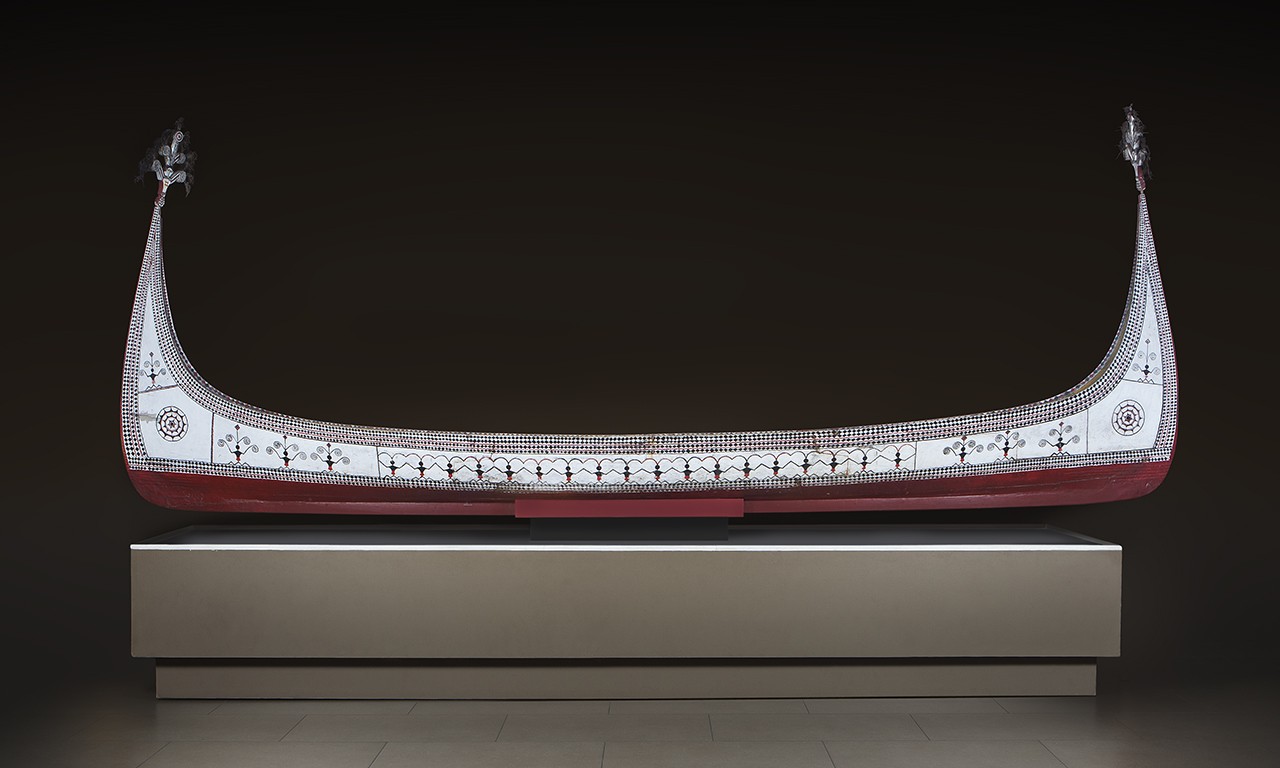 |
| Fishing Canoe (Taratara), 20th Century Yami culture; Lanyu (Orchid) Island, Taiwan Wood, paint and feather; 81 × 204 × 36 in. 97.8.1 Gift of Leon Chen |
When a Gangway’s Raised a Porthole Opens
While the hopes of the Bowers most nautically inclined visitors may be sunk following the departure of Arthur Beaumont: Art of the Sea this past weekend, rest assured that the Bowers Museum still has a few vessels—and depictions thereof—on permanent display. Veteran visitors will recognize the largest of these as the polychrome red, white and black canoe up against our John Lee Court’s north wall. This canoe or taratara was made in the 20th Century by the Yami or Tao culture, one of the indigenous groups of Taiwan. Rather than inhabiting the main island of Taiwan, this group lives on Orchid Island, a small island approximately 40 miles east of the main island’s southern tip. In this post we look at the creation of these vessels, their usage and the meaning of their designs.
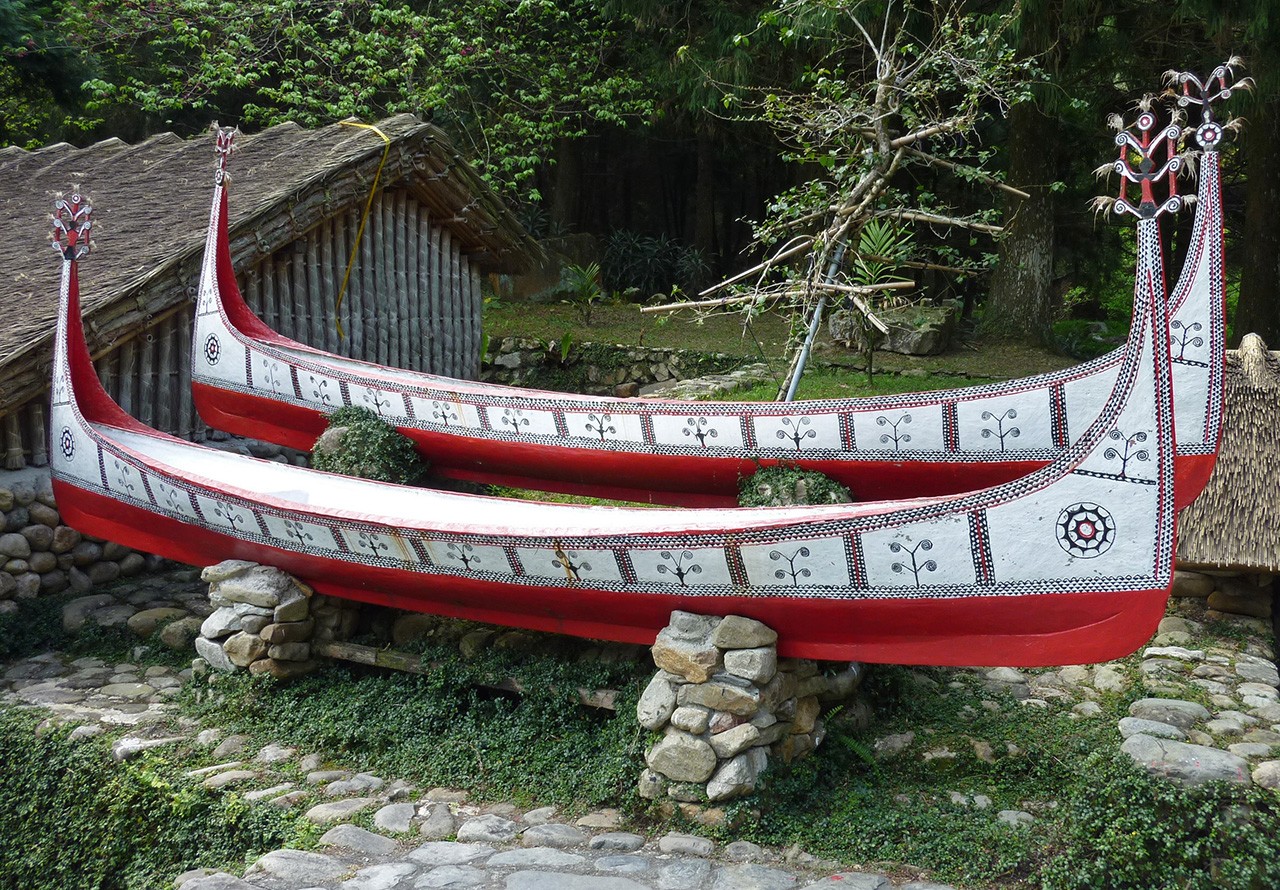 |
| Yami (or Tao) Balangays in the Formosan Aboriginal Culture Village, Taiwan, 2011. Taken by Bernard Gagnon and licensed under the CC BY-SA 1.0. |
Just Want Some Boat-y to Lug
Like other aboriginal cultures of Taiwan, the Yami are an Austronesian group. However, they are outliers in that they share many stylistic similarities in their art with the people of the Philippines. One of these commonalities is that both traditionally created balangays, a style of boat created using the ‘lashed lug’ technique. Boats can be made using many different methods. In many cases felled logs were either fire-hollowed or carved out to be turned into canoes. Other vessels were made from wooden planks which could be secured in several ways, including the use of metal nails or caulking. Balangays use wooden planks, but rather than the planks being secured with nails they are instead secured with wooden pegs which are lash together for added stability.
 |
| Yami people next to taratara on Orchid Island, c. 1931. |
Odd Keeled
When building taratara, the Yami vernacular name for their subtype of balangay, only wood from living trees is used. The use of dead wood is considered taboo. First three keels are carved. The central, straight keel is the main longitudinal support beam and the other two used for the stern and prow are curved. Two lines of pegs are inserted into these keels' acute angles and then large planks are socketed onto the pegs. Most canoes have 18 large planks, 9 per side arranged in a 3 by 3 grid with curving pieces used to build out the prow and stern. For the extreme precision measurements required to ensure that the various planks fit into place like the puzzle pieces they are, craftsmen use pieces of wood and reeds. Intricate carvings were then added using axes and small knives and pigmented with three pigments: red made from iron-rich soil, black made from soot, and white from lime. As the Yami did not have a written language, the method for making these canoes has been passed down orally through time.
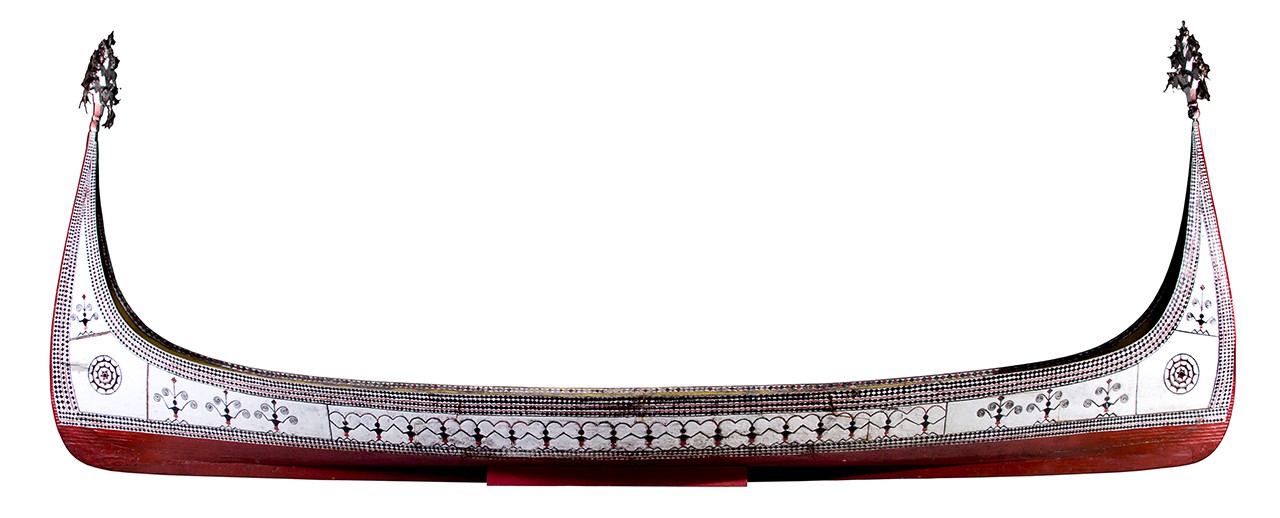 |
| 97.8.1 Gift of Leon Chen |
Gone Fishing
Living on a relatively small island, fishing was one of the major sources for sustenance among the Yami. This dependence made taratara the island’s lifeline. As dusk fell men gathered around the shore to pilot the vessels into coastal waters where they caught schooling fish by moonlight. Depending on several factors the size of these canoes varied substantially. A medium-sized vessel such as this one—or perhaps slightly larger than this—could have seated up to 12. The largest vessels recorded could hold as many as 20 and were by all accounts colossal.
| Details of 97.8.1 Gift of Leon Chen |
Floating Eyes
Despite having a very practical purpose, taratara also represent the history of the Yami. The decoration on the canoe depicts and honors the Yami’s ancestral hero, Magamaog, and can be seen spanning the entire length of the vessel both depicted with stylized representations of feathers coming from his head and without. The prow and stern elements are also representations of the same, though given that these are carved in three dimensions rather than two, these are adorned with actual feathers. Magamaog is credited with teaching the Yami agricultural and boat building methods. Because of his importance to the people’s survival, he is depicted not only on canoes, but also on house posts and ceremonial items. Along with other geometric motifs decorating the length of the vessel, the two large sets of concentric circles at the prow and stern of the canoe represent the eyes of the vessel.
Text and images may be under copyright. Please contact Collection Department for permission to use. References are available on request. Information subject to change upon further research.

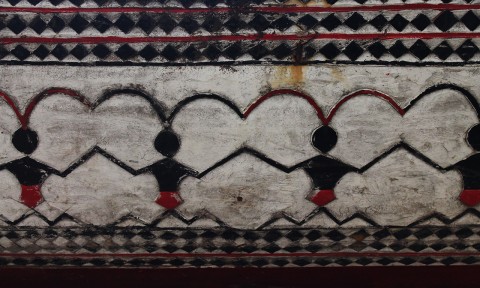
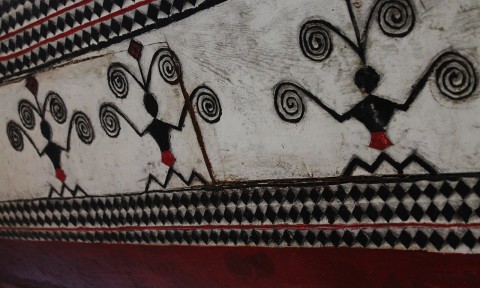


Comments